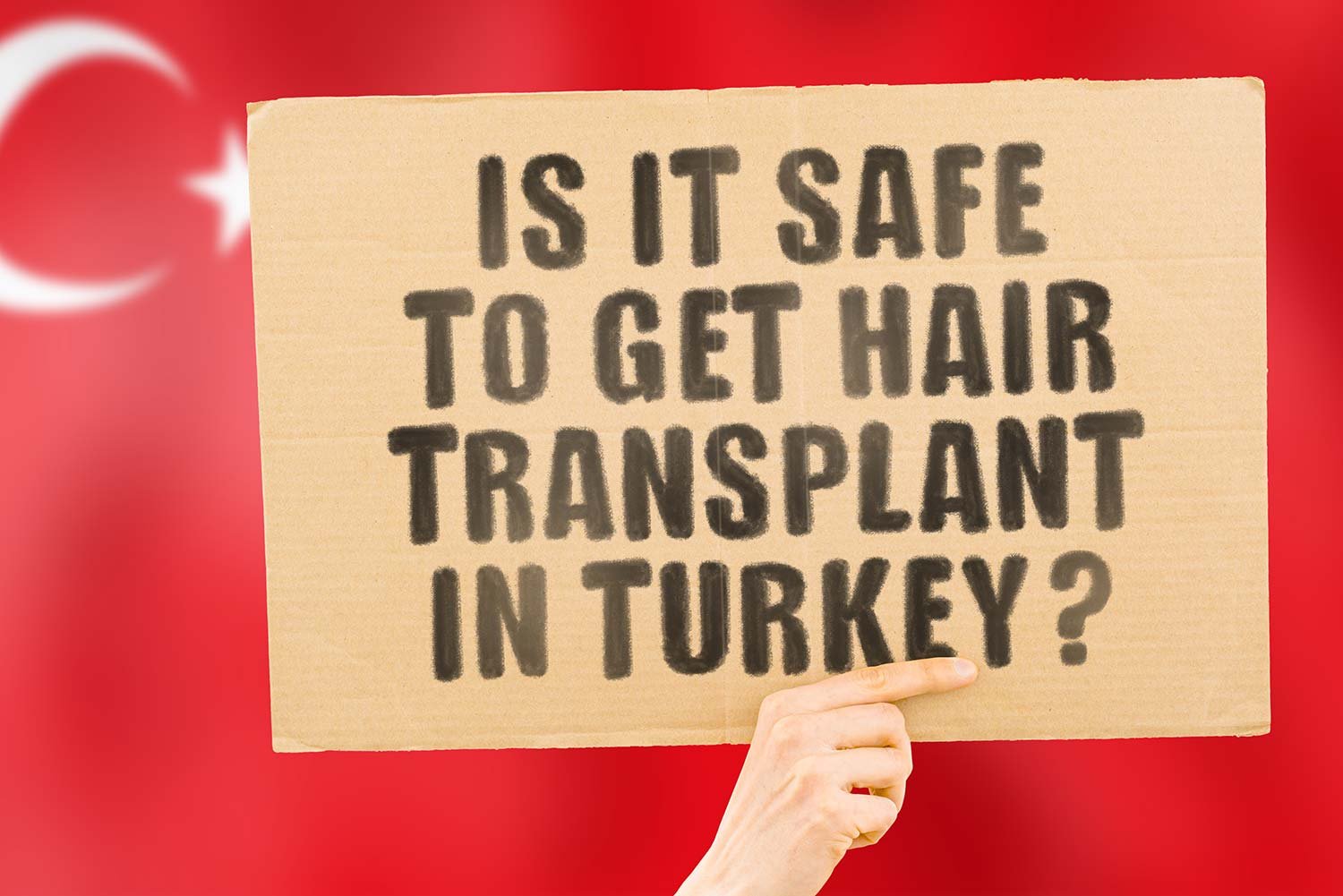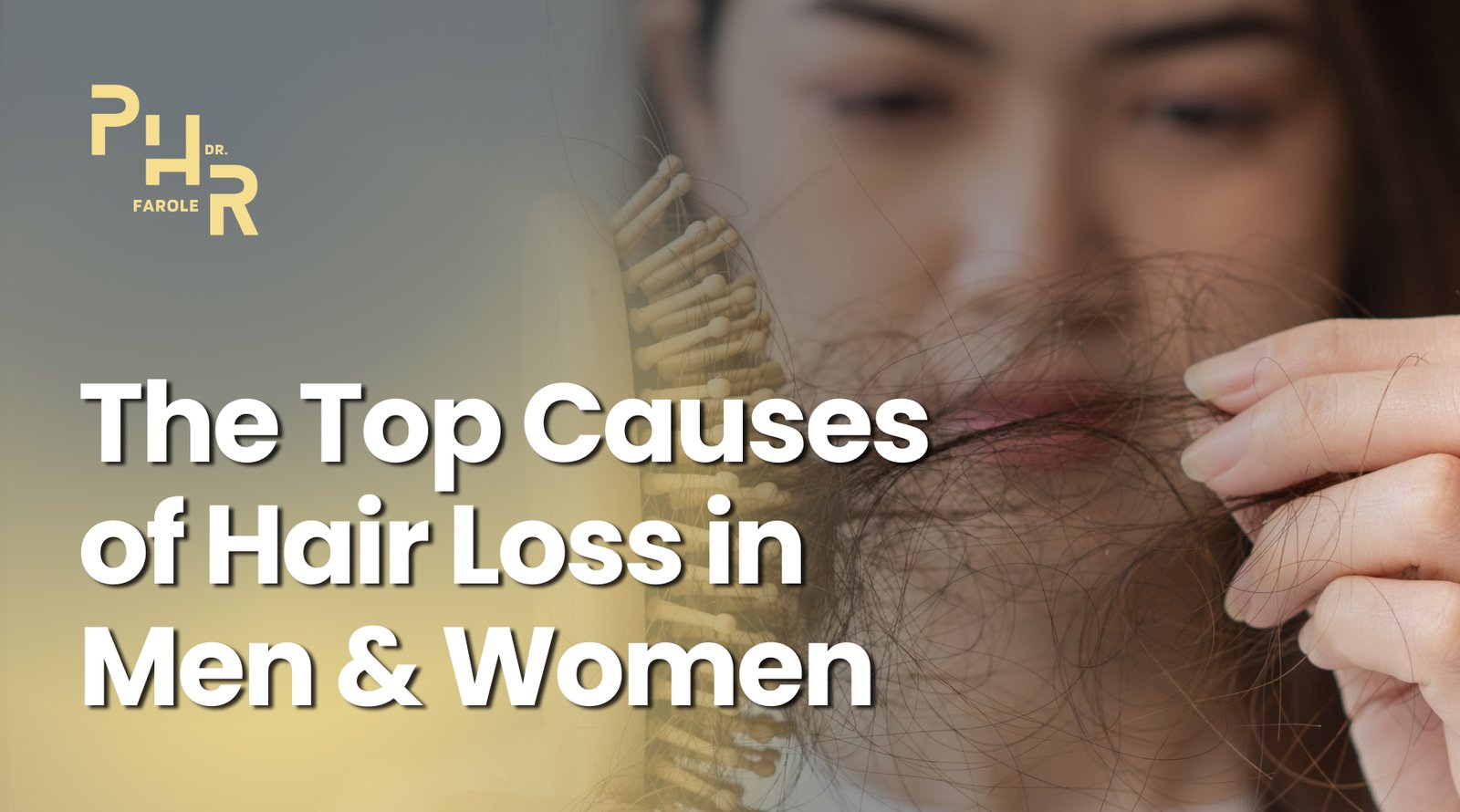Imagine waking up with gorgeous, natural-looking hair that doesn’t need you to splurge on hats, wigs, or concealer products. It’s a dream come true for many people, especially those who have undergone hair loss. Speaking of, a report by PubMed Central (a reputable database from the National Institute of Health) shows that about 60% of men and 50% of women worldwide suffer from some kind of hair loss. Quite alarming!
Sure, the possibility of regaining hair sounds great. But still, a big question lingers: is it worth the pain? We’ve all heard the stories, the urban legends, about the unbearable pain of hair transplant procedures. And it’s unbelievable how some of these myths are enough to make anyone contemplating a hair transplant stop and think.
But enough is enough; it’s about time we take a moment to separate fact from fiction. In this post, we’ll try to debunk the myth of hair transplant pain and help you reach an informed decision. We’ll get into the details to help you understand the different procedures available, the pain management techniques employed for the surgery, and even walk you through the post-transplant recovery process. Read on!
Understanding the Procedures
Before we get into the “pain” part, it would be best to understand what a hair transplant procedure is. That said, two commonly used techniques exist for restoring lost hair: Follicular Unit Transplantation (FUT) and Follicular Unit Extraction (FUE). Let’s look at each in a bit more detail.
Follicular Unit Transplantation (FUT)
Sometimes referred to as the “strip method,” FUT is a long-standing yet very effective technique.
The procedure entails surgically removing a strip of hair-bearing skin from the rear of your scalp. The strip is then divided into separate follicular units, each containing one to four hair follicles. The surgeon then makes tiny incisions in the recipient area (where there is substantial hair loss) and precisely implants these follicular units.
FUT makes an excellent option for severe balding cases as it allows for the transplantation of many grafts in a single session.
Follicular Unit Extraction (FUE)
FUE is a newer, less invasive procedure. Unlike FUT, it does not need the surgical removal of a strip of scalp. Instead, it entails harvesting individual hair follicles directly from the donor area, usually toward the back of the head. In this procedure, the surgeon creates tiny, circular incisions around each follicular unit with a specialized device before transplanting the grafts into the recipient area.
As mentioned earlier, FUE is less invasive and leaves less scarring, making it a popular procedure among many patients.
But, the question of how painful these operations are remains.
The good news is that both FUT and FUE are carried out under local anesthesia. You know what that means? It means you should not experience pain in the treated areas while undergoing the surgery. Often, the leading cause of discomfort is the administration of local anesthesia, which, according to most patients, feels like a few stinging pinpricks. But, once the anesthetic takes effect, the remainder of the surgery should be painless.
Even so, it’s crucial to remember that the pain or discomfort level varies from person to person; luckily, surgeons are adept at navigating this. Furthermore, technological and surgical technique advancements have made these operations more manageable and comfortable than ever before. In fact, during surgery, patients are free to watch TV, put on their favorite playlist, or even take a nap, all of which can’t quite happen when you’re in agonizing pain. Don’t you agree?
How Painful is Hair Transplant Surgery?
We get it; the mere thought of surgery can be frightening and even worse when it involves your scalp. But rest assured, the discomfort that comes with hair transplant procedures is tolerable for most people, if not anyone. To help you understand better, let’s break down the pain factor, taking both the physical and psychological aspects into account.
Physical Pain
Remember that throughout the surgery, you will be under the care of highly qualified personnel. Moreover, local anesthesia is used to numb both the donor and recipient areas, so you won’t feel any pain as the surgeon extracts or implants the grafts. Most patients describe the sensation as a minor discomfort, comparable to the initial sting felt when administering the anesthetic.
As emphasized in the previous section, the level of discomfort varies in different people, although most patients claim the surgery is far less painful than imagined. Some even compare it to visiting the dentist, which, despite not being the worst idea, isn’t most people’s favorite activity.
As the procedure progresses, you’ll stop worrying much about the minor discomfort and shift your focus to the prospect of having a new head of hair.
Psychological Aspect
As we all know, the fear of pain sometimes spans beyond the physical, with the psychological load of expectation being more difficult to bear than the actual pain. That explains why most people contemplating a hair transplant are usually more concerned about what they’ve heard or read about the pain.
But the truth is that medical professionals who take part in these procedures have the resources to guarantee your comfort throughout the surgery. Let’s hear from folks who’ve already been there and done that to offer you a more personal perspective.
· “Had FUE Surgery a few weeks ago and couldn’t be happier. Being a woman made me a little bit more nervous as to what the outcome would be like, but you can’t even notice that any surgery was done and the hair is growing wonderfully. I also Really enjoyed the experience. His staff was great, he answered all my questions. Would definitely recommend if you’re looking to get this procedure done.”
— Anastasia Sampaio
· “My boyfriend’s hair was thinning and bald spots were appearing! He was guided by Dr. Nam with an amazing treatment plan. He couldn’t be happier with the process and care of the team. And I’m so happy he has his confidence back! Highly recommend FUE by Dr. Nam at Dr. Anthony Farole’s Practice! WE Thank you!”
— Justine Kane
As these firsthand testimonials have shown, the pain associated with hair transplant procedures is often far less harsh than what some may believe. It’s crucial to remember that the discomfort is only short-term and that it’s the starting point for long-term hair restoration and improved self-confidence, which is what matters.
Pain Management Before and During Hair Transplant
The secret to a relatively painless hair transplant procedure lies in the effective application of pain management techniques, which are highly prioritized by facilities and surgeons alike, to ensure patient comfort throughout the procedure. These techniques include:
- Local Anesthesia
The provision of local anesthesia is the foundation of pain management in hair transplant surgery. Prior to the surgery, the surgeon will carefully inject an anesthetic solution into the donor and recipient areas. This numbs the exact areas where he will later remove and implant hair follicles, rendering the process virtually painless.
In other words, local anesthesia has a high level of efficacy. Once it takes action, you won’t feel any pain, just slight sensations like pressure or tugging as the surgeon operates on your scalp. As said earlier, the injection itself may cause momentary discomfort. Nonetheless, the sensation usually fades quickly, leading you into a painless operation.
- Pain Relievers
Some medical facilities may also offer their patients mild sedatives or pain medications to help them relax and relieve any post-surgical discomfort. These medications are not typically needed because, thanks to the local anesthetic, most patients experience little to no pain during the course of surgery.
- Advanced Surgical Techniques
In addition to local anesthesia and pain relievers, surgical advancements have made hair transplants even more comfortable. In our modern age, surgeons are trained to minimize scalp damage when performing surgery. The ability to make smaller incisions and the availability of precision instruments have made the entire procedure less intrusive and less painful to boot.
- Communication with your Surgeon
Communication is yet another crucial part of pain management. Feel free to notify your surgeon of any discomfort you may feel during the surgery, as this will allow them to make the necessary changes to guarantee your comfort.
Post-Hair Transplant Surgery
The long-awaited moment has come, and your hair transplant procedure is now complete. Although the treatment itself is relatively painless, you may have a little discomfort in the following hours and days. As such, you must clearly understand what to expect as you begin your recovery phase.
Pain and Discomfort
The majority of patients report only minor discomfort following surgery. You may feel a sensation of stiffness or soreness in both the donor and recipient areas. This is completely normal and can be treated with over-the-counter pain medicines your surgeon prescribes. Moreover, it’s essential that you strictly adhere to the post-operative care instructions provided by your surgeon.
Swelling
Swelling is a typical side effect after hair transplant surgery, particularly around the eyes and the forehead. Often, this peaks during the second or third day after the procedure before it begins to fade. Cold compresses will do the trick if you want something to help relieve the swelling.
Scabbing and Itching
Small scabs may form around the transplanted grafts over the following few days. Like swelling, these scabs are just but a normal part of the recovery process and will gradually fall off by themselves. You might experience itching as the scabs heal, and when that happens, DON’T scratch or pick at them to avoid infection and ensure optimal results.
Sleeping Position
To ease post-surgery discomfort, try sleeping with your head elevated at a 45-degree angle, at least for the first couple of nights. Doing so will help minimize swelling and the likelihood of graft dislodgement.
Hair Washing and Care
After the procedure, your surgeon will advise you on how and when to wash your hair. Remember, good care is crucial in ensuring the success of the grafts and reducing the risk of infection. So, follow your surgeon’s instructions to the letter.
Long-Term Recovery and Hair Regrowth
Beyond the initial post-surgery discomfort and anxieties is the long-term recovery phase, which is all about patience and gradual transformation. Although swelling and soreness may have subsided, it’s crucial to continue following the post-surgery instructions.
As you progress, you’ll start to see your scalp revert to normal, as well as itching and scabbing issues disappearing. All you can do now is embrace the change, watch your new hair grow in the previously bald areas, and enjoy the significant boost to your confidence.
Nevertheless, it’s important to note that the regrowth process is gradual, with the timeline varying from one person to another. While you’ll begin to see some results after a couple of months, the most profound changes usually appear six to twelve months post-surgery.
That said, managing expectations is critical—during your appointment, your surgeon may present a realistic assessment depending on your specific case. With continued proper post-operative care and patience, you’ll eventually be able to enjoy the fuller head of hair you’ve always desired.
Address Hair Loss Head-On
At this point, we can all agree that the decision to have a hair transplant is a big one, no doubt. But the fear of discomfort should not stop you from getting the hair you’ve always desired. Many people have been discouraged from considering a remedy that may potentially change their lives due to misconceptions about the pain associated with hair transplant surgeries.
But as we have seen, the reality of these procedures is significantly less alarming than the myths suggest, thanks to advances in medical technology and pain management techniques. We believe that by separating fact from fiction, we may help you reach an informed decision regarding your hair restoration journey.
Remember, numbers don’t lie: hair loss is a prevalent issue affecting a sizable proportion of both genders globally. By looking into the various options and learning the pain management techniques, you can begin your journey to increased confidence and natural-looking hair. Therefore, dispute those myths, take that first step with Philadelphia Hair Restoration, and contact us today for a free consultation.




